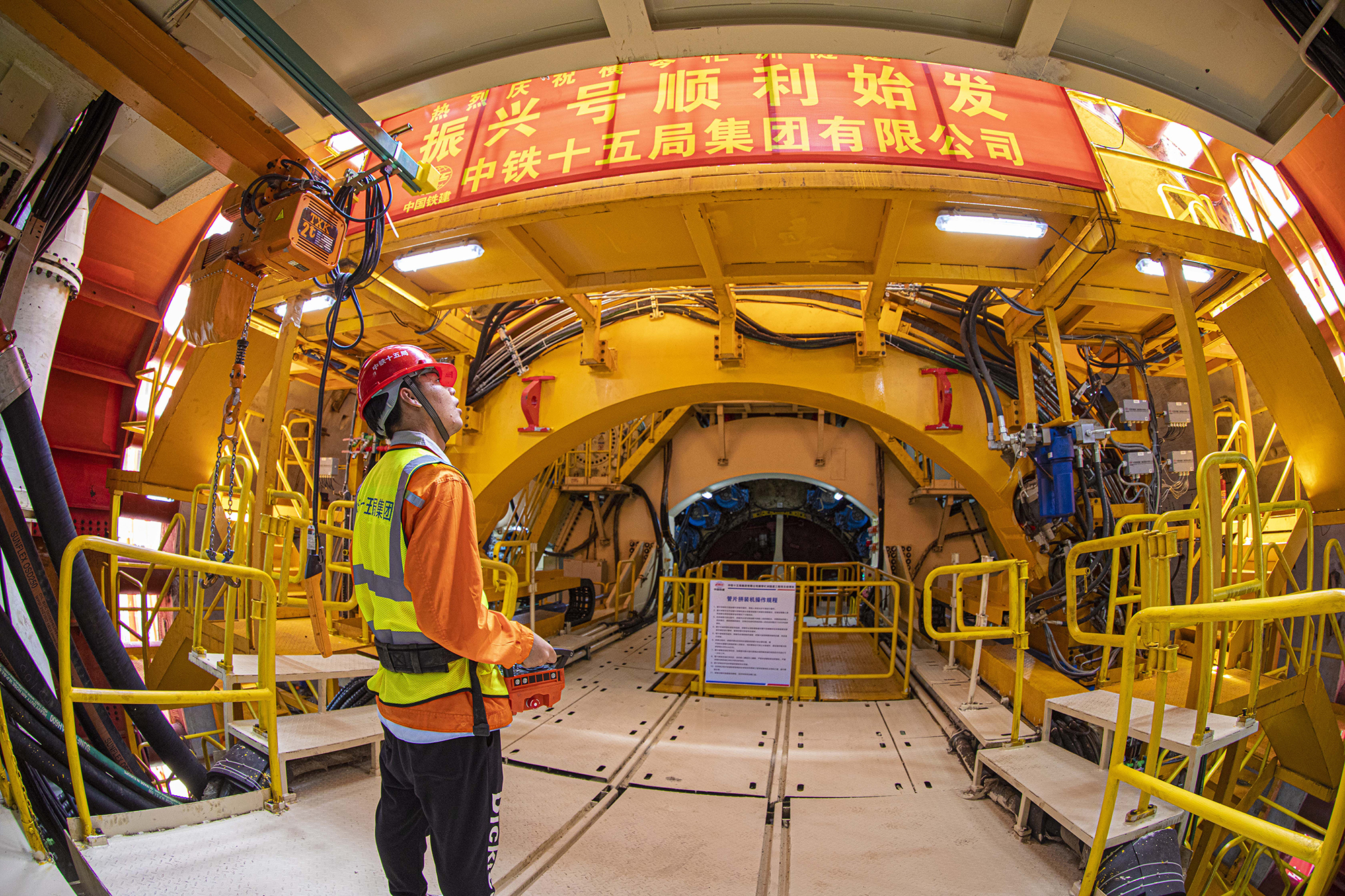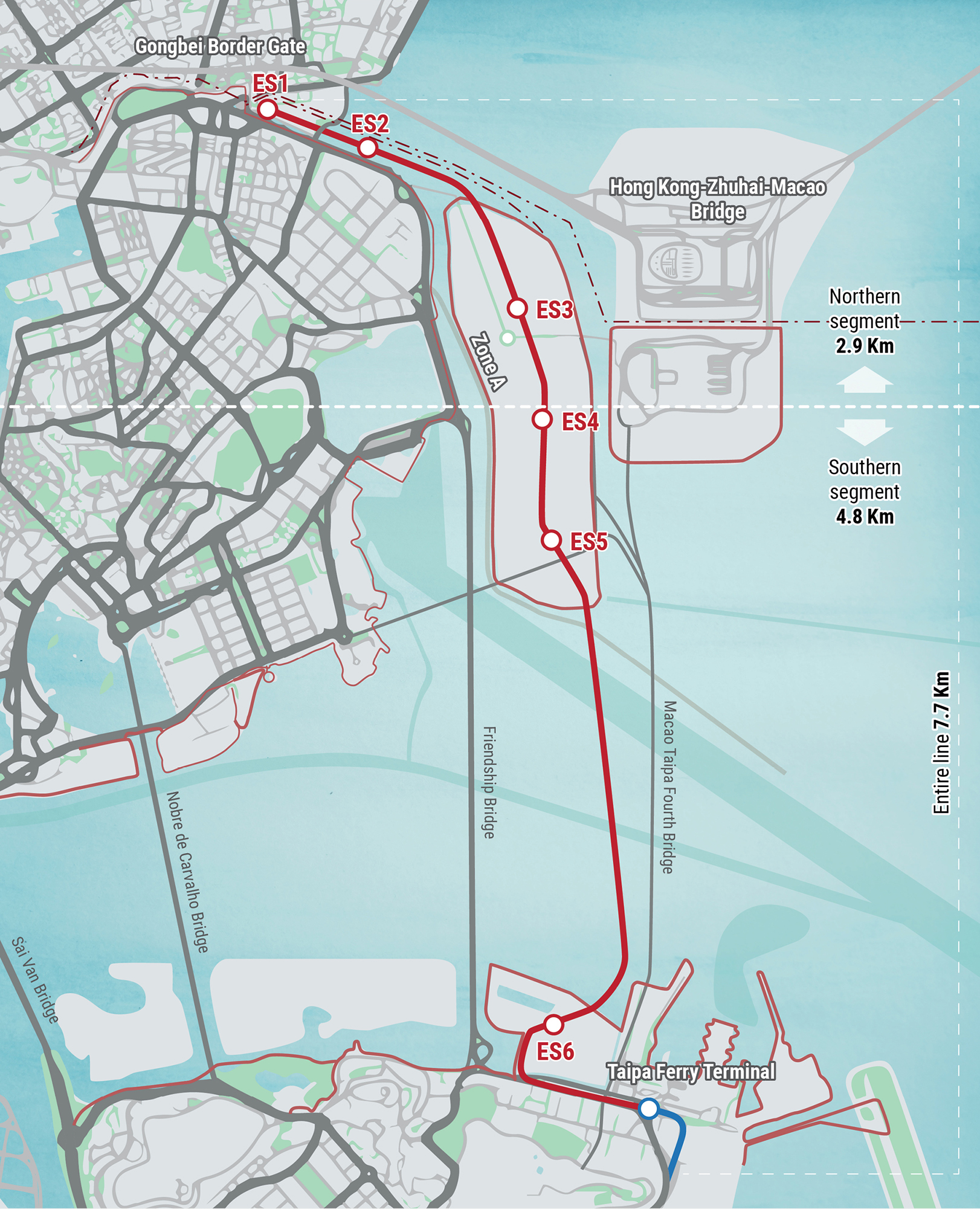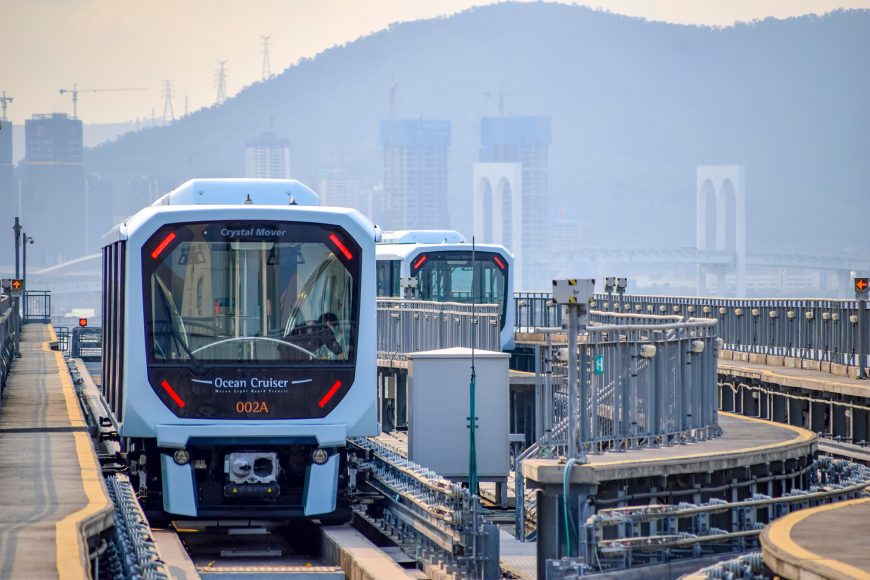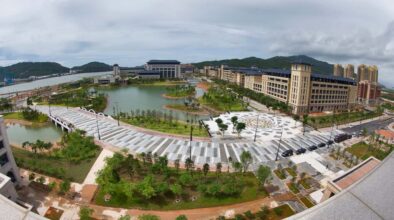Tenders are now open for parts of the Light Rail Transit (LRT) East Line. A few days before the official gazette announcement, published in October, Public Works Bureau Director Lam Wai Hou announced that the much anticipated new track was set to be completed in 2028. It will make for a swift 15-minute journey between the Gongbei Border Gate – which is mainlanders’ primary point of entry into Macao – and the Cotai Strip in Taipa. Around 23,000 people make that commute daily, which currently can take up to an hour in heavily congested traffic.
Engineering firms interested in constructing either the 2.9-kilometre northern segment or 4.8-kilometre southern segment of the East Line have until 15 February 2023 to submit proposals to the government.
While no budget has been estimated, applicants must pay MOP 120-130 million to be considered for the tender and their work must be completed within four years of a contract being signed.
The successful firm’s biggest challenge will be a 3.1-kilometre-long underwater tunnel, according to engineers contacted by Macao magazine. Building it will require a thorough understanding of the sea’s movements and tides, the seabed, and suitable construction materials. The 900-metre tunnel currently being built for the new LRT connecting Cotai to Hengqin could serve as a model for the East Line, the engineers suggested.

The new track will include six underground stations, three of them in the future Zone A residential area. Covering 138 hectares of reclaimed land near the Hong Kong-Zhuhai-Macao Bridge, Zone A will be home to at least 100,000 residents after completion, also slated for 2028.
Chief Executive Ho Iat Seng recently announced that the central government will lease land in Zhuhai to the Macao government, allowing for future extension of the East Line all the way to the Qingmao checkpoint in Ilha Verde. This will allow the East Line’s first station to be built closer to the Gongbei Border Gate – shortening the walking distance between station and checkpoint by 65 metres.
Three other LRT lines are currently under construction in Macao: the Seac Pai Van Line, the Hengqin Line and the Barra Line, which will connect the existing Taipa Line to the Macao peninsula.
Macao’s government has implied a northern line may also be on the cards, running the length of Macao peninsula to connect Barra (in the southwest of the peninsula) with the Gongbei Border Gate (in the north).
The Taipa Line, Macao’s first LRT line, has been in operation since December 2019. Construction of the 9.3-kilometre-long, 11-station line took seven years, something officials hope to avoid with the East Line by splitting the construction between two tenders, which may also keep costs down.

Initially, the LRT transported around 33,000 passengers per day. Then the Covid-19 pandemic hit Macao in January 2020 and by 2021, that figure had dropped to more like 2,000. Ridership is expected to increase to around 137,000 passengers per day in 2028, as the completion of the East Line brings Macao’s LRT to 24 kilometres and 16 stations.
MTR (Macau), a subsidiary of Hong Kong’s major public transport network MTR, currently runs Macao’s LRT system while Mitsubishi handles the signals, communication systems, power supply facilities, track construction, platform doors, fare charge machines and most importantly the carriages running on the LRT.
Macao is set to see massive improvements in its infrastructure system over the next few years and the expansion of the LRT system will alleviate congestion across the city’s roads and make for an easier place to navigate both for locals and tourists.



